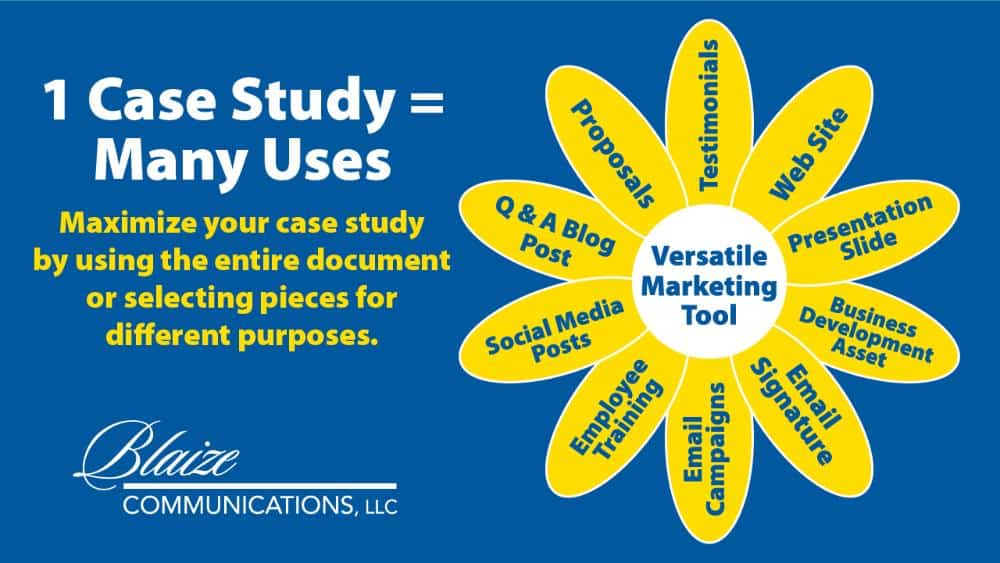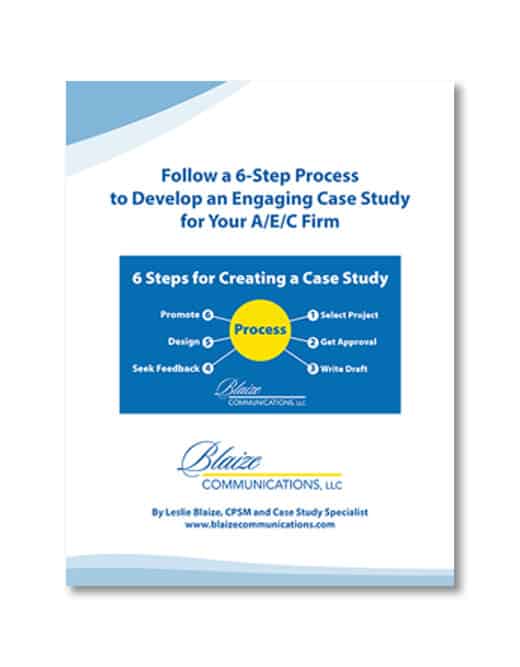A typical case study reveals how your company helped a happy customer solve their problem.
The beauty of this versatile marketing tool is that it can serve multiple needs.
Here’s how one case study can serve the diverse needs of a marketer and project manager at a professional services firm.
The marketer needs a testimonial and graphic for a fast-tracked proposal. He turns to a recent case study, grabs the elements he needs, and inserts the information into the proposal.
The project manager, a seller-doer, returns from a prospect visit and immediately sends the same case study to her contact.
A case study is like a treasure chest of content, just waiting for you to pull out individual pieces or use the entire document.
A case study is usually two to four pages long. This marketing tool includes engaging customer quotes that offer behind-the-scenes insights.
Here are some other key elements that are included in most case studies:
- Metrics that show how a project solved a challenge
- Graphics
- Photos
- Customer’s picture
- Key project elements
Promote Case Studies on Your Website
As part of the planning process, consider how you’ll use a case study once it’s completed. Many companies will post it on their website. One approach is to post the complete customer story or just share project highlights and then link to the whole document.
Some repurpose case studies into Q & A blog posts.
If you create multiple case studies, then you could list them on your website from a drop-down menu. They also could be featured in a resources section.
When customers are in the final stages of the buyer’s cycle, they will be focusing on what it would be like to work with your professional services firm. Through a customer success story, they learn what to expect.
How Can Case Studies Help with Sales?
Case studies also can assist with the sales process. After discussing a prospect’s needs, the company’s representative can follow up with an appropriate case study. The prospect may discover how a peer solved a challenge they’re facing.
Some companies also use case studies in their email campaigns to a segmented prospect list.
Mike Schuster, FiddleSmart Marketing, reports that one of his clients used case studies as blog posts on their website to help people understand the journey others took. These success stories also explain how their firm helped serve as a guide through the process.
In addition, he reports, “The client used key facts from the case study for prospecting and emails.”
Case Studies as Marketing Assets
Repurpose your case studies to save time and get the most out of this marketing tool.
For example, turn a few key metrics and a quote into:
- A compelling presentation slide or two for a client interview
- A few social media posts
- A graphic for your trade show booth display
Elements from customer success stories also can be included in your industry awards. You could even link to case studies from your email signature.
Consider distributing your customer success stories through your internal corporate channels. They can become a source of pride for employees, who may then share them with others.
Improve Marketing Efficiency with Case Studies
When your company needs to access content quickly, is it available? With case studies, many critical elements are in one place for your review. Use the entire document or just take the parts you need.
Share Your Story
How have you used case studies or success stories? I’m interested.
I will share additional information about case studies and content tips in future articles. Subscribe to A/E/C Connect LinkedIn Newsletter if you’re interested in learning more.
If you have a challenge or question you would like me to address, please contact me online or email blaizecommunications@gmail.com.



